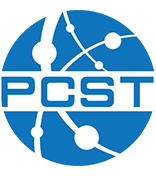Building knowledge infrastructures for citizen science: The quest for reciprocity
Author: Per Hetland – University of Oslo, Norway
This paper focuses on building knowledge infrastructures for citizen science, and the importance of reciprocity. Knowledge infrastructures facilitate collaboration between scientists, volunteers, and administrators across disciplines and organizational boundaries. In Norway, the establishment of species observation (SO) gave a new opportunity for volunteers to participate in a national mapping activity and has facilitated bridging activities between science and different publics in new manners. With SO, a successful knowledge infrastructure has been established between the scientific community, the volunteers, and conservation authorities. The mapping of biodiversity has been made into a very large collaborative enterprise.
This paper reports on a web survey about SO with 404 respondents and answers the following research question: How do volunteers perceive their engagement in citizen science and how does one build knowledge infrastructures that facilitate reciprocity?
Within citizen science, the participants’ motivation to participate is much studied. However, we will claim that by building knowledge infrastructures that facilitate reciprocity, one builds a long-lasting relationship between the participants and the activity undertaken. These kinds of relationships do not primarily build on a one-way motivation to contribute, but on a reciprocal relationship where all parties gain something.
Two findings are crucial. First, the new knowledge infrastructure facilitates both uploading and downloading information; downloading information is a very important activity—examples are private field diaries, searching for information, looking at recent records, looking at statistics, and looking at catalogues. Second, the users emphasize both individual interests and collective action. Individual interests include competition, displaying their own pictures, studying others’ pictures, learning something new, spending more time outdoors, increasing their own knowledge, and most importantly, keeping track of their own records. Collective action includes contributing to species mapping, contributing to research, and collaborating with other naturalists.
The author has not yet submitted a copy of the full paper.
Presentation type: Individual paper
Theme: Society
Area of interest: Investigating science communication practices
